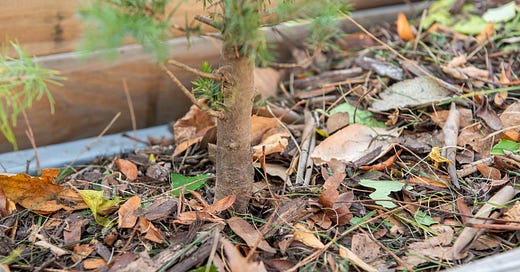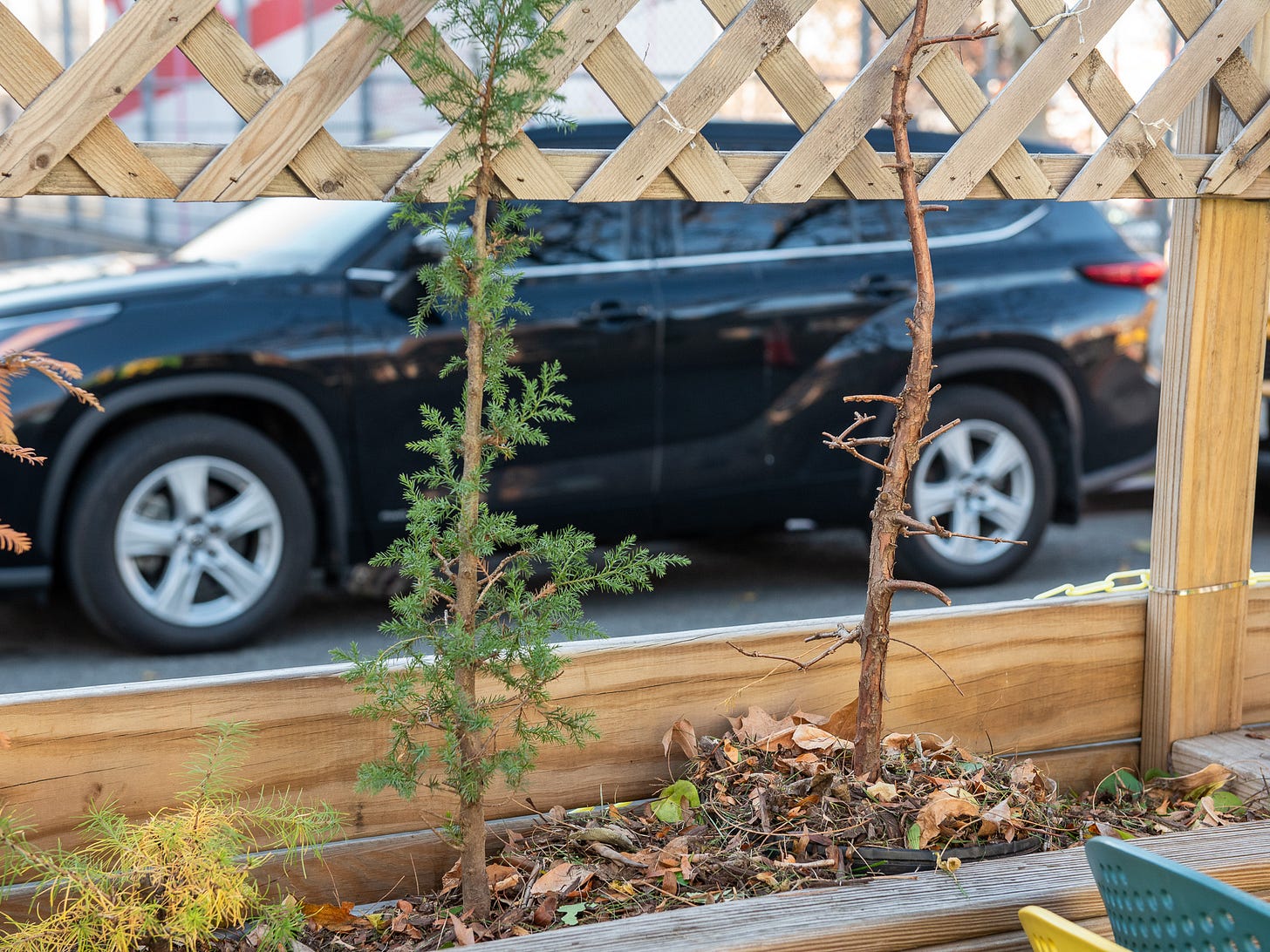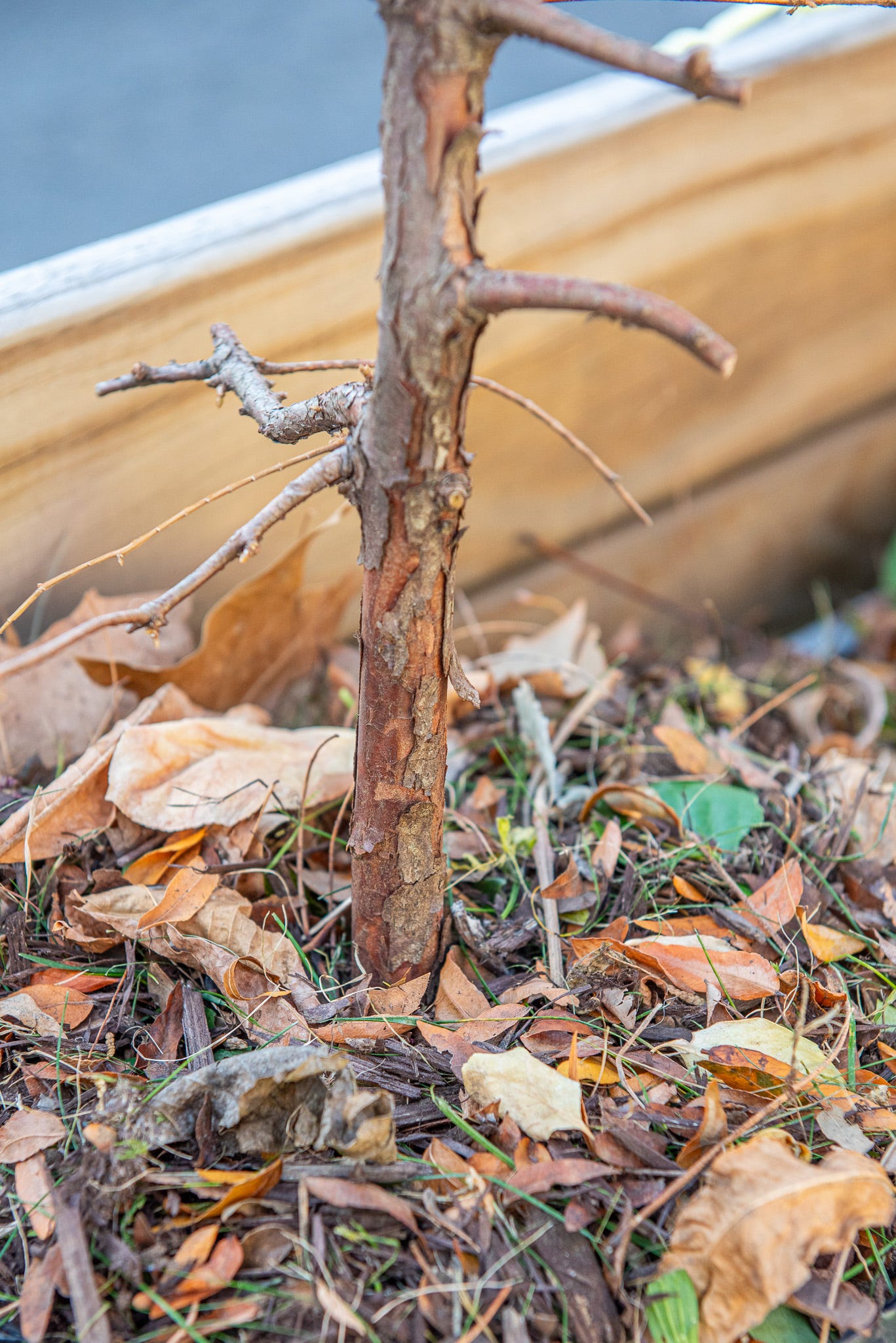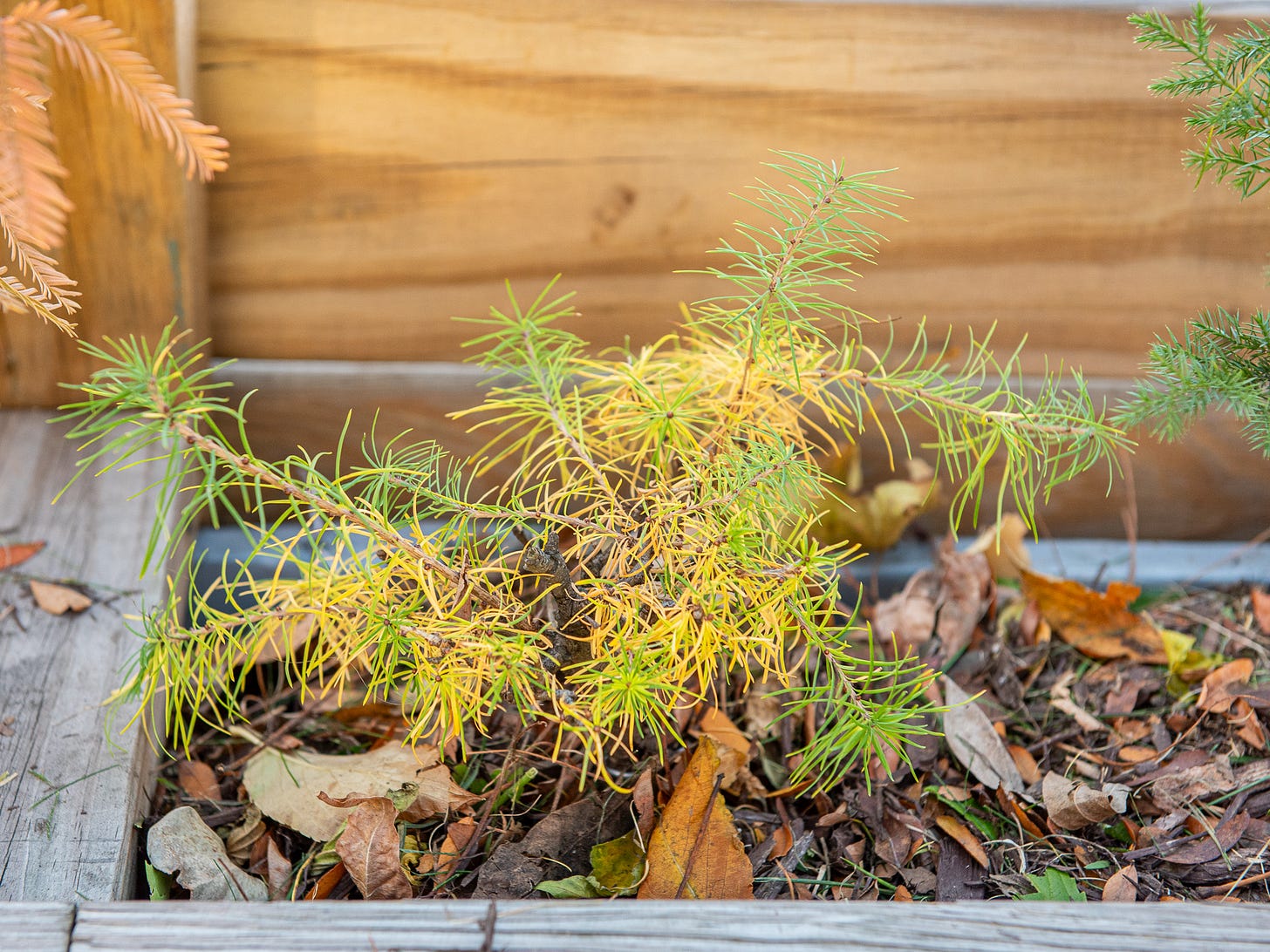My suburban bonsai have been safely relocated to Queens, where they now live with the rest of my outdoor trees. Though let’s put a pin in the word “safely.” Conifers have a neat habit of acting normal for weeks after a traumatic injury, only to signal stress well past the point of remedy. This delayed response is what allows Christmas trees to look lively indoors, severed from their roots. It also means I won’t know the fate of my eastern red cedar for another month.
This eastern red cedar is my oldest surviving tree. Here’s what it looked like when I bought it from a home grower in October 2021. It’s the smaller one on the left.
That winter, a malicious squirrel gnawed off all its branches, forcing the tree to sprout all new growth. It only survived because eastern red cedars—technically members of the juniper genus—grow like weeds. Ironically, the new flush of tender growth made the tree more suitable for bonsai training. The branches are in better proportion with the trunk.
Since the attack, I’ve left the tree alone to recover its strength. The trunk looks good these days.
This Thanksgiving I put the tree’s weedy vigor to the test once more. The only way I could fit it in the restaurant planter with the rest of my trees was to yank it out of its five-gallon pot. The soil was a compacted muck of sand and clay, and I winced at the sound of fine feeder roots tearing apart. I think I left enough of them to let the tree acclimate to its new surroundings over the winter. Since junipers don’t show weakness until they’re dead, I’ll just have to wait and see.
My dawn redwood had an easier journey from the suburbs. I’ve left it alone in a nursery pot to gain some trunk girth. Come spring, I’ll repot it and the eastern red cedar into proper bonsai soil to improve their roots. All I can do now is add a thick layer of mulch to insulate it over the winter. Which brings us to getting mulchpilled.
Mulch refers to any woody or leafy plant material that can be layered over bare soil. Pine needles, wood chips, grass clippings, and dried leaves all make good mulch. Mulch shelters soil from drying winds and freezing temperatures, and provides important habitat for small animals and insects over winter. Then, over time, it breaks down into new soil, replenishing the earth with nutrients to feed the next generation of plant growth. Mulch is nature’s composting service, the process by which the dead protect and nourish the living.
Mulch is enjoying a cultural moment, both narrowly in the form of an inscrutable Gen Z meme about #mulchgangforlife, and in greater response to our collective anxieties about endless streams of human-created waste. Tiktok is full of mulch best-practice tutorials from arborists and gardening influencers; mulch’s narrative of ecological regeneration is a surefire theme for social media success.
In a time when mass extinction seems like an inevitability, who couldn’t use some mulch? New Yorker writer and Fire Escape Bonsai appreciator Helen Rosner remarks that composting her food scraps “made disposal feel like creation, not waste.” Mulch is for outdoor foliage what compost is for rotting food: a way to rescue precious organic material from an eternity of languishing in a landfill, sealed away from the world in a bubble of plastic. In her article about countertop composting appliances, Rosner considers the industry that has sprung up to capitalize on the consumer interest of repurposing waste. More than a means of turning trash into something useful, she calls such devices “machines for the efficient alleviation of guilt.”
In the past I’ve purchased mulch from the garden store, like a chump. This bothers me, because mulch is literally trash. It feels insulting to buy something that we pay garbage collectors to haul away. Instead, coco coir processors halfway around the world are getting lung diseases to make a sanitized, compacted mulch product for the benefit of urban apartment dwellers like me, who have limited access to free local mulch and no place to store a stockpile.
While on a walk to water my trees earlier this week, I passed a group of landscapers who were collecting leaf litter into trash bags for a neighboring apartment building. New mandates in New York City say that yard trimmings should be contributed to our burgeoning composting program, but in practice, the single brown compost bins provided by the Department of Sanitation can’t accommodate the 30 bags of fallen leaves collected by an apartment building. Instead, property managers continue to hire private contractors to haul away yard trash, which eventually winds up in yet another landfill.
It was too good an opportunity to pass up. A perfect mix of mulch materials. So I asked the landscapers if I could take a bag off their hands. Bemused but happy to oblige, they provided me a black plastic bag with an estimated 30 pounds of free mulch. I swung it over my shoulder like a trash bag Santa and made my way to the restaurant where my outdoor trees live. There was enough mulch to insulate not just my trees, but the entire planter bed. What a gift of trash!
I wish I had a regular source of mulch this good. It’s fall, and leaf trash is plentiful. If I need to add new mulch over winter, it won’t be this easy to find. Maybe I’ll post on Nextdoor with an offer to haul away someone’s yard waste. As with the composting machines, I’m sure my search for free mulch is really a vain attempt to alleviate my own climate guilt about the waste streams I can’t control, but at least I won’t be a shlemiel who’s paying for the privilege.
Tree reading
Eric Adams’ proposed budget cuts will kill New York City’s volunteer-run community compost program, which, unlike the Department of Sanitation’s composting system, turns food scraps into free compost instead of methane that’s burned into the atmosphere. You can sign GrowNYC’s petition in support of the community compost program here. [The City]
American demand for avocados is razing forests and depleting aquifers across Mexico, in stark defiance of Mexican law. [New York Times]














Another option is to post on your Buy Nothing group on Facebook, which will connect you to neighbors for free mulch!